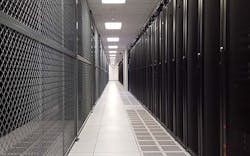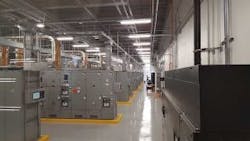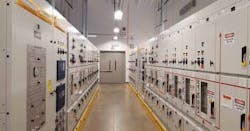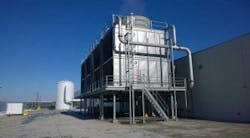Data Center 101: Mastering the Basics of the Data Center Industry
Data Center Frontier, in partnership with Open Spectrum, brings our readers the Data Center 101 series which provides an introductory guidebook to the ins and outs of the data center and colocation industry. Think power systems, cooling, solutions, data center contracts and more.
See below to discover which Data Center 101 lesson you or a colleague might need today:
Data Center 101: Data Center Types
This report explores the different data center types available to your clients. These include Real Estate Investment Trusts (REITs), private equity-backed companies, publicly owned companies, telecommunications providers, private IT companies, and more.
After studying this report, you will be able to:
- Define the principal legal structures of data center owner-operators.
- Interpret some of the ways that these legal structures influence business decisions, especially regarding service to clients and contract negotiations
- Communicate to an infrastructure buyer the pros and cons of working with any given type of provider
Data Center 101: Data Center Solutions
This report walks readers through the different data center solutions available today, including build-to-suit data centers, shell building data centers, modular data centers, wholesale data centers, and more.
After studying the Data Center 101: Data Center Solutions report, you will be able to:
- Define different solutions offered by data center operators
- Quantify the value different solutions provide different clients, and determine why some might be more desirable than others at any given time
- Communicate effectively to your clients which solutions would best meet their needs
Data Center 101: Data Center Pricing
This report covers essential data center colocation equations, crucial to offering your clients the best options available for their data needs. Further, it explores circuit-based billing, all-in billing, metered power billing, and the evolution of data center colocation pricing.
After studying this report, you will be able to:
- Determine usable wattage for single and three-phase circuits
- Calculate MRC for the industry’s primary billing models
- Evaluate basic costs
Data Center 101: Negotiating Data Center Contracts
This report explores the ins and outs of negotiating contracts for data centers. One of the most important pieces of the equation when purchasing or selling data center services is the legal contract signed by the client and the provider. Unfortunately, these contracts are far too often overlooked by the client or reviewed by attorneys who are unfamiliar with the industry.
After studying this report, you will be able to:
- Identify an infrastructure buyer’s key concerns and negotiation leverage points
- Identify an infrastructure seller’s key concerns and negotiation leverage points
- Discuss concerns with buyers or sellers with empathy and understanding
Data Center 101: Data Center Power
A power room housing electrical infrastructure inside the RagingWire VA3 data center in Ashburn, Virginia. (Photo: Rich Miller)
This report covers a variety of different data center power options. Have you ever struggled to describe in layman’s terms how to meet your client’s needs, or wasn’t quite sure how to describe how kVA differs from kW? This Data Center 101 report is here to help.
After studying this report, you should be able to:
- Accurately describe how kVA differs from kW, describe how single-phase and three-phase circuits differ, and describe how these and other elements work together to deliver power to racks
- Calculate PUE and describe how it applies to infrastructure buyers
- Describe in layman’s terms what clients mean when they state their technical needs, as well as what solutions will or will not serve them appropriately
Data Center 101: Auditing and Compliance
This report offers an introduction to various auditing organizations relevant to the data center industry, such as the The American Institute of Certified Professional Accountants (AICPA), the worlds largest organization of accountants, and The Federal Information Security Management Act (FISMA), which provides federal standards for federal agency data security practices. Even elements like data center cooling have organizations that publish standards for everything; in this case, the American Society of Heating, Refrigeration, and Air-Conditioning Engineers (ASHRAE).
After studying this report, you should be able to:
- Describe the key auditing organizations and their compliance requirements
- Communicate to your client the significance of a facility’s certifications
- Describe where to turn to in the book after you’ve forgotten all about key auditing organizations and their compliance requirements
Have you ever struggled to describe in layman’s terms how to meet your client’s needs, or wasn’t quite sure how to describe how kVA differs from kW? Data Center 101 is here to help.
Data Center 101: Designing Data Center Power Systems
To succeed in the data center industry, you will have to be able to communicate to an infrastructure buyer the pros and cons of working with any given type of colocation provider — large or small. (Photo: Rich Miller)
This report describes the crucial elements of data center power systems that make sure there are as few outages as possible. These include utility substations, automatic transfer switches, battery backup and uninterruptable power supply, transformers and inverters
After studying this report, you should be able to:
- Describe the key pieces of infrastructure that keep a data center supplied with redundant power
- Describe how these systems work together to ensure maximum uptime
- Evaluate a specific data center and describe how that facility’s systems determine its reliability
Data Center 101: Data Center Redundancy
This report explores the importance of the symbols N, N+1, N+2, 2N, and 2N+1 and their relationship with redundancy. The symbols N, N+1, N+2, 2N, and 2N+1 are commonly used to describe the level of redundancy built into the architecture for the power and cooling infrastructure within a facility.
After studying this report, you should be able to:
- Define what the “N” jargon actually means—and what it doesn’t mean
- Describe why redundancy matters to clients
- Communicate to a client the redundancy capabilities of a specific facility
Data Center 101: Data Center Cooling
This report explores some of the top data center cooling designs of today. There are dozens of cooling designs in use, and even more being designed and deployed as the industry continues to evolve and grow.
After studying this report, you should be able to:
- Describe the key elements in a data center’s cooling system
- Accurately describe how these elements work together
- Communicate a facility’s cooling strengths or limitations to a client
Data Center 101: Data Center Fire Suppression
The Data Center 101: Data Center Fire Suppression report gives readers the knowledge they need to keep their data center investments — as well as their clients’ — safe from the threat of fire.
A cooling tower at a Digital Realty data center in Virginia. (Photo: Rich Miller)
The report first takes readers through the important components of a data center fire suppression system. The report also offers information on how these elements work together.
After studying this report, you should:
- Be able to describe the basic components of a fire-suppression system
- Be able to describe how these elements work together
- Know how to communicate to a client the strengths and limitations of a facility’s systems.
Data Center 101: Uptime Institute Certifications Defined
At some point while working in or around the data center industry, there will be mention of what “Tier” a specific facility is — or is not. This report serves as a very brief overview of what this “Tiered” classification system amounts to. This section also serves to define the different certifications the Uptime Institute offers.
After studying this report, you should be able to:
- Accurately define the entity Uptime Institute
- Accurately describe the key features of each of the Uptime Institute’s tier categories
- Determine a client’s actual tier needs and communicate why
Data Center 101: Data Center Disaster Recovery
This report focuses on the process of saving data and ensuring the ability to recover data in the event of an outage.
The phrase Disaster Recovery, or “DR” for short, is thrown around often and sometimes confused with the phrase “business continuity.” To be clear, DR is simply a subset of business continuity planning.
After studying this report, you should:
- Be able to define basic recovery strategies
- Be able to identify which recovery strategy lends itself to which circumstances
- Speak with a client about recovery strategies while understanding their standard terminology
The Data Center 101: Strategies for Data Center Location
A cloud-filled sky above a Facebook cold storage data center, framed by the mountains of central Oregon. (Photo: Rich Miller)
This report focuses on data center site selection.
The location where a company hosts its infrastructure can play a critical role in that company’s success or failure. It is therefore important to take several different variables into consideration before recommending one location over another.
After studying this report, you should be able to:
- Accurately describe how a data center’s location can produce unique competitive advantages and disadvantages
- Accurately identify when a client may want a data center located nearby rather than farther away
Data Center 101: Cloud Computing
This report teaches readers how to discuss actual needs with clients and the limitations of any given cloud infrastructure.
Unfortunately, the phrase “cloud computing” now means so many different things to so many different people. Learn more about what it means to the data industry and to your clients.
After studying this report, you should be able to:
- Accurately define “the cloud”
- Accurately describe what people mean — and what they think they mean — when they toss around cloud jargon
- Discuss actual needs with clients and the limitations of any given cloud infrastructure
Just joining the industry or need to brush up on Data Center basics? Review these posts. And Suggest our Data Center 101 Special Report Series to a colleague, which covers topics such as data center design, types, power, negotiating data center contracts and more.











